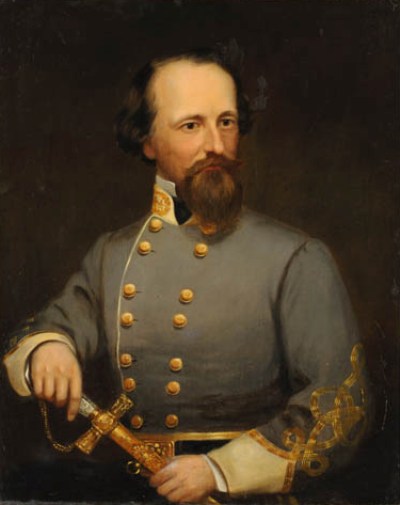The Pettigrews
(Tyrrell County)
Featured Characters – 1860

James J. Pettigrew
Courtesy of the North Carolina Museum
of History
James Johnston
Pettigrew was born on July 4, 1828, at Bonarva Plantation on Lake
Phelps.
His father
operated several large plantations in
neighboring Tyrrell and Washington
counties. At age 14, he entered the University
of North Carolina,
where he graduated in 1847 with the highest
honors. At the commencement
were President James Polk and the Secretary of the Navy, who offered
him a
professorship at the U.S. Naval Observatory. After six months there,
Pettigrew
began to study law in Charleston,
only to leave
to study in Europe
that same year. When he
returned in 1852, Pettigrew continued to practice law in Charleston.
When South Carolina
seceded from the Union, Pettigrew was elected Colonel of
the 22nd North Carolina Troops and was appointed
to monitor the Potomac.
When the Union Army was
approaching
Richmond during the Peninsula
Campaign, Pettigrew was hit by a musket ball
while scouting the position
of the enemy. The ball went through his throat and shoulder, damaging
his right arm permanently. He lost consciousness and did not regain it
until he
awoke in a Union hospital and was afterwards sent to prison in Fort
Delaware.
When he was finally exchanged, he came into command of a brigade of North Carolina troops known as
Pettigrew’s Brigade that
served northeastern North Carolina.
On June 1, 1863, Pettigrew’s brigade marched to Gettysburg, Pennsylvania
with the Army of Northern Virginia. On the third day of fighting there,
Pettigrew’s division took part in the assault known as Pickett’s
Charge, where
they went farthest to the front of the fighting, at the stone wall, and
were
the last men to return to Confederate lines.
On July 14, while standing
with a
group of officers while withdrawing troops after Gettysburg,
an altercation broke out when a
group of straggling federal cavalry rode into them. Pettigrew was shot
in the
stomach, his only hope was staying immobile until Union doctors could find
and
treat him. He refused and said he would rather die than be captured
again and
so he was carried to Bunker Hill, West Virginia,
where he died
three days later. His body was
later taken to Raleigh, where he was given a funeral and later buried
with his family in Tyrrell County. Bonarva Plantation
eventually formed the core of Pettigrew State Park. .
.
.
.
